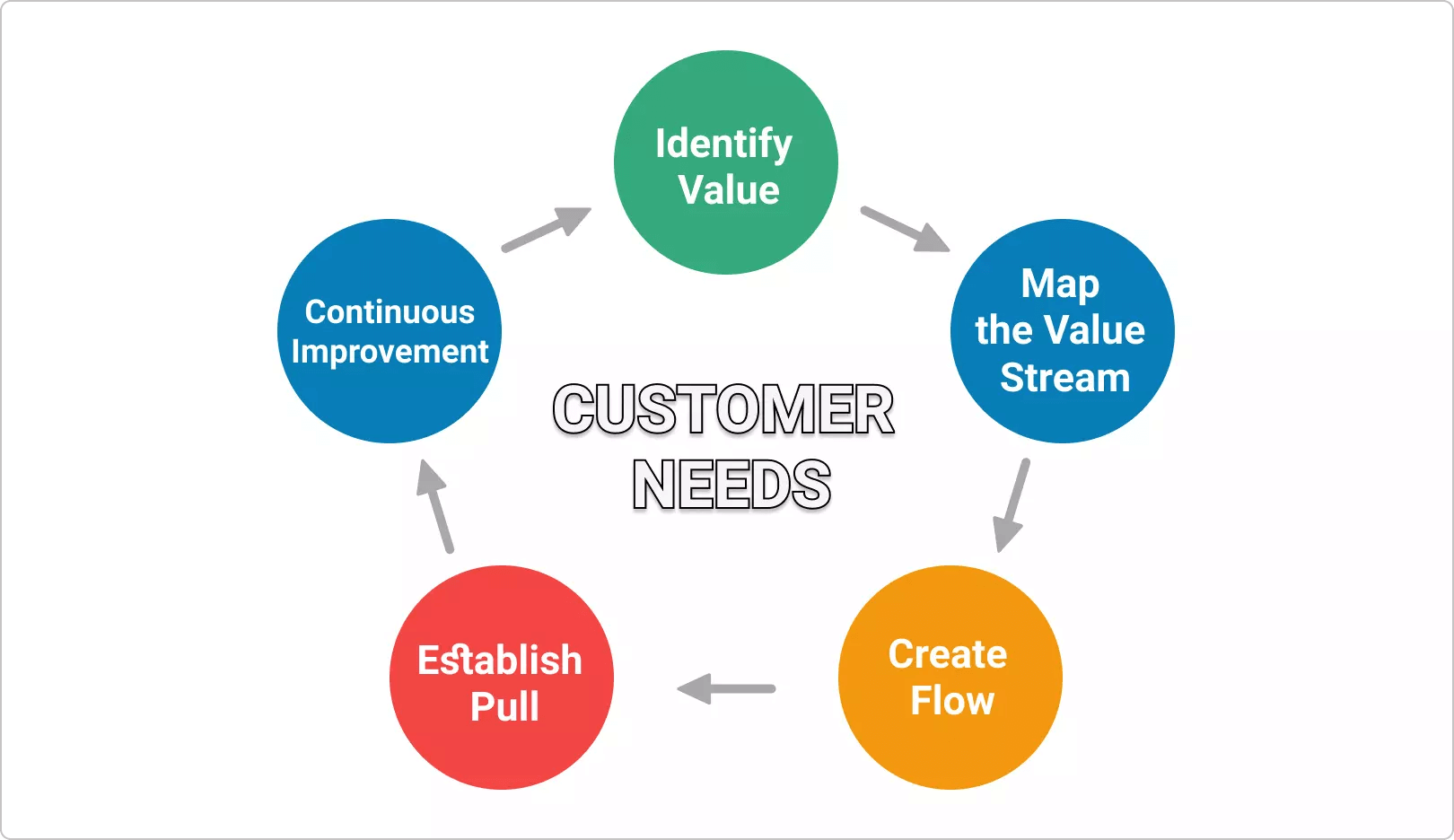Key Takeaways
-
What is continuous improvement in Lean? It's the mindset and practice of making small, incremental changes that drive value, reduce waste, and improve efficiency.
-
What drives the process? Continuous feedback, employee involvement, and structured experimentation using Lean tools.
-
Core principles: Focus on value, eliminate waste, empower teams, sustain improvements, and embrace data.
-
How to implement? Start small, use visual tools like Kanban, apply the PDCA cycle, and reinforce a culture of learning.
What Is Continuous Improvement and Why Does It Matter in Lean?
Continuous improvement is the ongoing effort to improve processes, products, or services by making small, incremental changes. Rather than disruptive overhauls, this approach values sustainability, consistency, and long-term results.
In Lean management, continuous improvement is a core pillar. It aims to reduce waste (Muda), smooth process flow (reduce Mura), and prevent overburden (Muri). All three types of waste undermine quality and efficiency.
When applied well, continuous improvement leads to streamlined operations, empowered teams, and faster delivery of customer value. Continuous improvement is an essential component in a range of management systems, including Lean, Six Sigma, and Total Quality Management.
Continuous improvement is the behavioral expression of Lean principles in action. Without a mindset of continuous improvement, Lean stays theoretical.

What Is a Continuous Improvement Cycle?
The Plan–Do–Check–Act (PDCA) cycle is the foundation of continuous improvement:
-
Plan: Identify a problem or opportunity and design a small change.
-
Do: Implement the change in a controlled way.
-
Check: Evaluate the results using data.
-
Act: If successful, standardize the change; if not, iterate.
This loop keeps the improvement process active, measurable, and rooted in experimentation.
How Is Continuous Improvement Applied in Practice?
Continuous improvement isn't just a theory - it's applied daily through Lean tools and real-world feedback. Consider this example from Aerosud, a global aerospace manufacturer:
By implementing Kanban boards and work-in-progress limits, Aerosud's engineering teams were able to visualize bottlenecks, prioritize urgent work, and double their throughput within days. They complemented these visual tools with 5 Whys root cause analysis and feedback loops to make CI a habit, not just an initiative.
»» Read the full Aerosud case study
How to Implement Continuous Improvement in Your Organization
-
Start with one team or process: Pilot CI where improvement is needed most.
-
Empower employees: Encourage feedback and experimentation from everyone.
-
Set measurable goals: Use metrics to evaluate progress and adjust.
-
Scale and sustain: Standardize what works and expand across departments.
What Are the 3 C's of Continuous Improvement?
-
Customer: The source of value; focus improvements on their needs.
-
Culture: Embed CI into your values, habits, and daily rituals.
-
Capability: Build the skills, tools, and systems to support continuous learning.
These pillars ensure improvements are both meaningful and scalable.
How Do You Measure and Sustain Continuous Improvement?
Success comes from tracking real results. Some key metrics include:
- Lead time and cycle time – How quickly are tasks completed?
- Throughput – How much work is delivered over time?
- Error or defect rate – Is quality improving?
- Employee engagement – Are teams contributing and owning changes?
Tools like Businessmap help automate and visualize these metrics. Teams can spot patterns, compare progress over time, and set goals based on data, not guesswork.
To sustain improvements:
- Regularly review outcomes
- Celebrate wins and small changes
- Integrate CI into team rituals (e.g., retrospectives)
Continuous Improvement Is a Culture, Not a Project
Continuous improvement isn't just a Lean buzzword - it's a practical way to keep your organization evolving. By embracing the mindset of experimentation, learning, and feedback, you build a culture that thrives on change rather than fears it.
Whether you're reducing waste, increasing agility, or empowering your people, continuous improvement gives you the tools and mindset to do better every day.
Businessmap is the most flexible software
to align work with company goals









